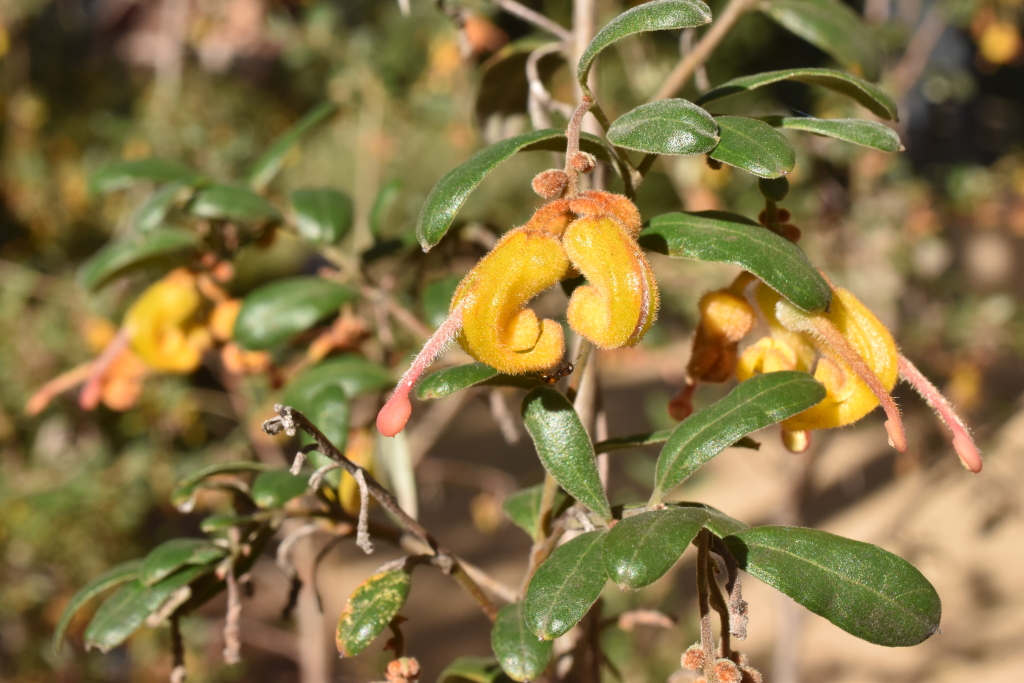Grevillea chrysophaea
F.Muell. ex Meisn. Golden GrevilleaSpreading shrub 0.3–2.5 m high. Leaves entire, broadly to narrowly oblong-elliptic, to almost linear, 1.5–6 cm long, 3–15(–23) mm wide; lower surface tomentose to velvety, occasionally obscured by the recurved or revolute margin. Conflorescences terminal on short lateral apically decurved branchlets, usually simple, 2–8(–12)-flowered, 1.5–2 cm long, subsecund; rachises tomentose to subvillous; perianth dull to golden-yellow with a sprinkling of white and brown hairs, basally dilated, 4.5–6 mm across, outer surface tomentose to villous, inner surface bearded; tepals prominently keeled or horned near apex; perianth deciduous soon after anthesis; pistil 15–21.5 mm long, ovary sessile, villous, style red or orange-red with pale hairs, villous, pollen presenter lateral. Fruits villous, longitudinally ridged. Flowers mostly Jun.–Nov.
VVP, GipP, OtP, CVU, EGL, HSF, Strz, VAlp. Victorian endemic. Growing usually in eucalypt woodland or heath in silty sand to sandy loam in the Brisbane Ranges (Anakie-Steiglitz area), and Gippsland in the area roughly enclosed by Traralgon, Woodside and Sperm Whale Head-Licola.
Olde & Marriott (1995a) distinguish 3 forms:
Gippsland form-low rounded shrub, flowers often bright yellow-gold.
Brisbane Ranges form-open to straggly shrub, perianth conspicuously hairy.
Holey Plains form (from south-west of Sale) - with narrow leaves c. 5 mm wide, smaller and less hairy flowers than the other forms.
McGillivray's (1993) circumscription included the since-published Grevillea celata within G. chrysophaea; references in that treatment to root-suckering habit, red coloration on the perianth, and occurrence in the Buchan area refer to G. celata.
Makinson, R.O. (1996). Grevillea. In: Walsh, N.G.; Entwisle, T.J., Flora of Victoria Vol. 3, Dicotyledons Winteraceae to Myrtaceae, pp. 845–870. Inkata Press, Melbourne.
 Spinning
Spinning
